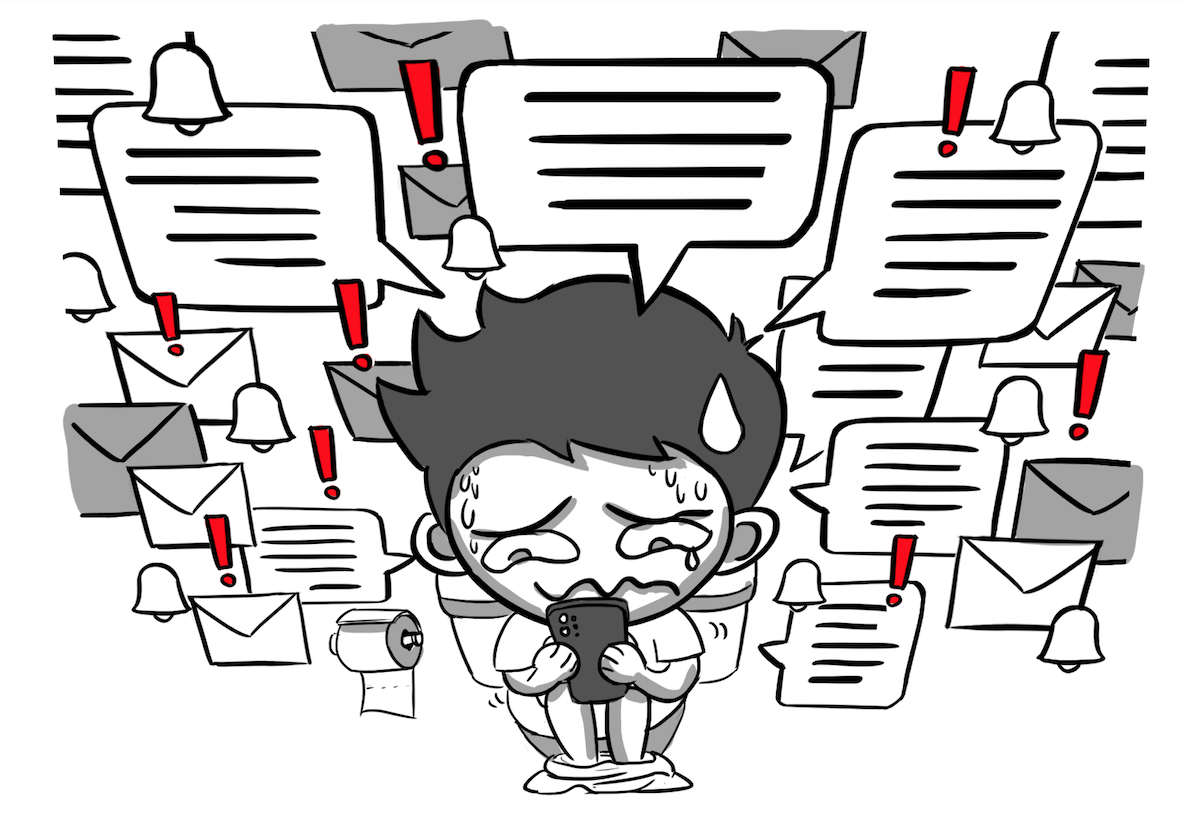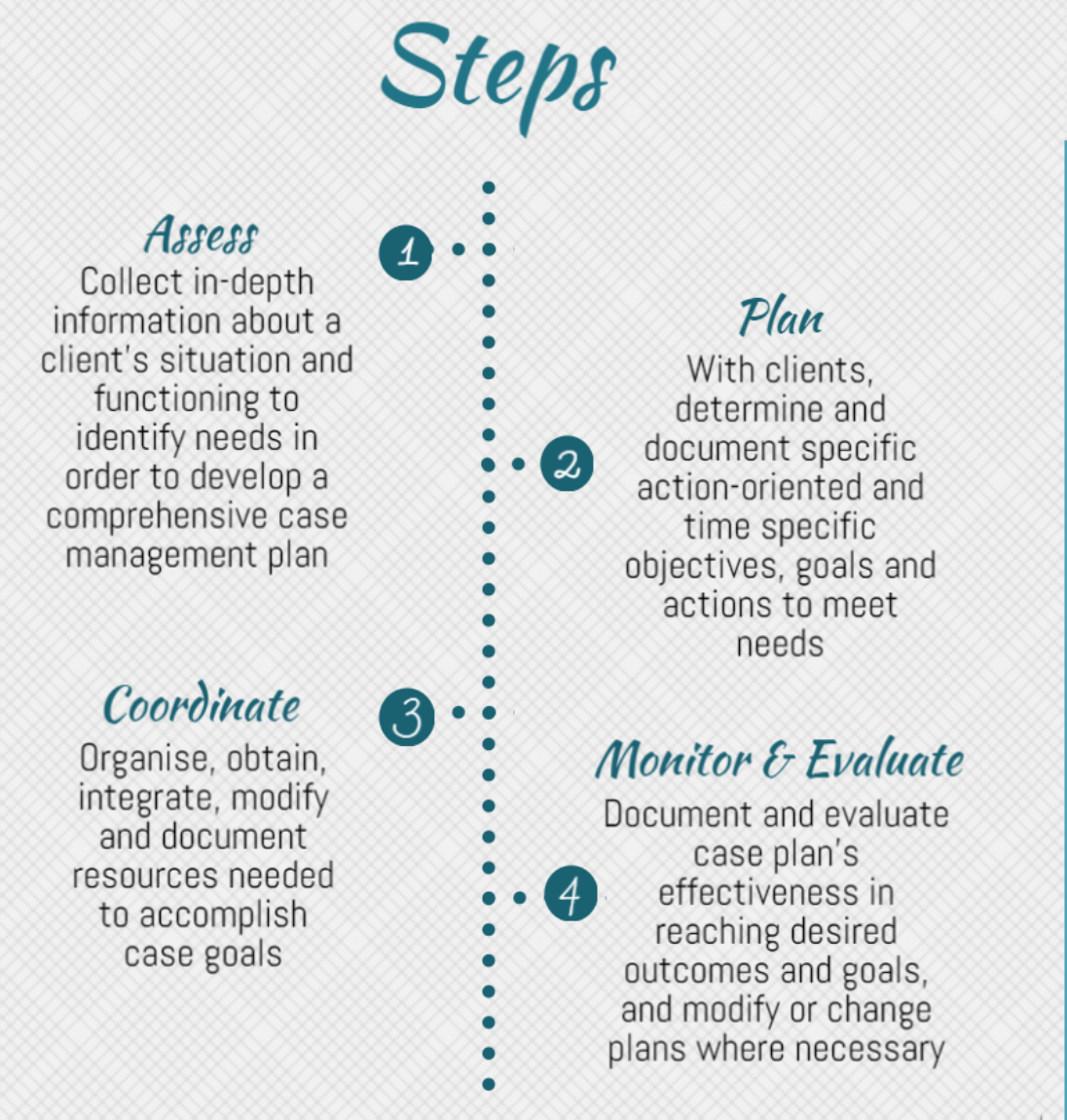Nah, you don’t have to go for additional training courses like the Advanced Certificate in Training and Performance to learn how to be a better social worker.
It’s funny how I was never taught this in university. Sure, I learnt all about the theory, but I never formally learnt how to ‘manage a case’, until I was a social worker back in Singapore.
That may be the case for you too.
You’ve learnt:
- The psychology (and abnormal psychology)
- The socioeconomic theories, and why there is still poverty
- Sociology
But then you come into Day 1 of your social work career, and you hear people saying,
You just have to ‘case manage’ this.
How’s the case management for this client?
Let’s start with the theory.
Case management, defined

How is it defined?
A collaborative process that assesses, plans, implements, coordinates, monitors and evaluates the options and services required to meet the client’s health and human services needs.
But I like to define it a little easier.
Connect client demands, to your internal and external resources.
What this means is this.
Your client might need a job.
You have your internal networks, like friends, and family. You might ask a family member who’s running a business if they have any available openings.
Or you can direct your client to external opportunities like job boards for help.
But how do you do case management?
The Ministry of Social and Family Development in Singapore actually wrote a useful resource on this, which you can see below.

Before we talk about how to do it, let’s first talk about the common mistakes in case management.
First assess, before jumping into problem solving mode

If you’re a little like me, impatient and always wanting to get things solved fast, you might face problems with clients.
It was only when I started working with difficult clients that I realised what I saw as solutions, weren’t always solutions to the client.
Huh?! How can that be?
Aren’t you solving the problem?
That’s where assessment comes in.
I remember a time when a client told me about how much she wanted to learn the guitar. A day later, I took an unused guitar from my home and passed it to her.
3 months later, she still hadn’t learnt how to play it.
It goes to show why it’s not just about assessing the client’s wants but the client’s ability. They can’t just want something, but they need to have the ‘can-do’ for your intervention to work.
Else, you will be more frustrated that the efforts you took to help, were seemingly flushed down the drain.
Planning, may sometimes require pushing
If you’re honest with yourself, you probably hate bureaucratic forms that you need to fill in for the government too.
Just think about your taxes.
Or maybe you’re applying to buy a house.
You get the idea.
But imagine that for your client, he’s having to do this regularly, in order to jump through the hoops needed to get help. It can be deeply distressing and very troublesome.
Worse still, these appointments often take place during working hours. Your client may even have to take leave from work to attend these meetings.
You have to figure out how to help in some way.
And that means you may have to cajole, push, and persuade your client. Even if it means turning up at his doorstep at 6 in the morning to get your young client to go to school, and stop playing truant.
It can be that tough.
What I find helpful is asking the client,
What will need to happen for you to attend this appointment?
If their answer is,
I need you to bring me…
You have to be prepared to do that.
We do want to encourage independence, but we also have to admit that sometimes, once you miss this appointment, you may end up having to wait 3 more months.
I’ve been in places where I’ve turned up at the client’s door, only to find her not answering the door.
Calling and pressing the doorbell many times, she eventually turned up, sleepy and bleary eyed.
She sheepishly admitted that she had forgotten the appointment we were supposed to keep, and asked if she could skip it.
We couldn’t. Else we would have to wait for 3 more months.
We landed up in a taxi, trying to rush there.

You have to take the effort to go the extra mile to plan.
And this may mean turning up an hour early, so that you have a buffer in case something goes wrong.
Coordination may be messy paperwork
If you don’t like paperwork, social work might hurt you.
This is the part where many social workers start hating.
Ferguson’s study of time use in social work, found that up to 45% of time was spent on administrative work, more than anything else.

You may have come into social work thinking that you would be journeying with the client.
But very often, this comes with:
- Filling up forms to government agencies
- Waiting on the end of calls with them to government agencies
- Bringing them to agencies to get help
- Emailing agencies
Coordinating also means keeping good relationships with agency partners.
Rather than going to the generic email address, there are some agencies in Singapore, such as the Social Service Office, which you will regularly work with for financial assistance issues.
Ask for their email address so that you don’t have to be routed through the entire system each time you write in.
Build trust with them.
Better yet, buy them donuts. Having these tight relationships, where you’re well liked allows you to move your client quicker through the system.
You need to be willing to quit if it’s not working
Sometimes, we may be so wedded to a particular solution as a social worker that we forget there are other solutions that may work better.
Especially when you’ve guided your client down that path too.
You might think of the sunk costs, and feel embarrassed telling your client that you need to change the approach.
It’s okay.
Apologise to your client. Say something like,
Hey, I’m really sorry. But it looks like this method of getting help from the government is not working.
I think something else may work better. Would you be willing to try it?
Getting the trust again from your client may need time, but it will be worthwhile.
Case management can be crazy
After 2 years of case management, I realised that the biggest help was being willing to form close partnerships with everyone I met.
Make them your friends, and your life would be much easier.